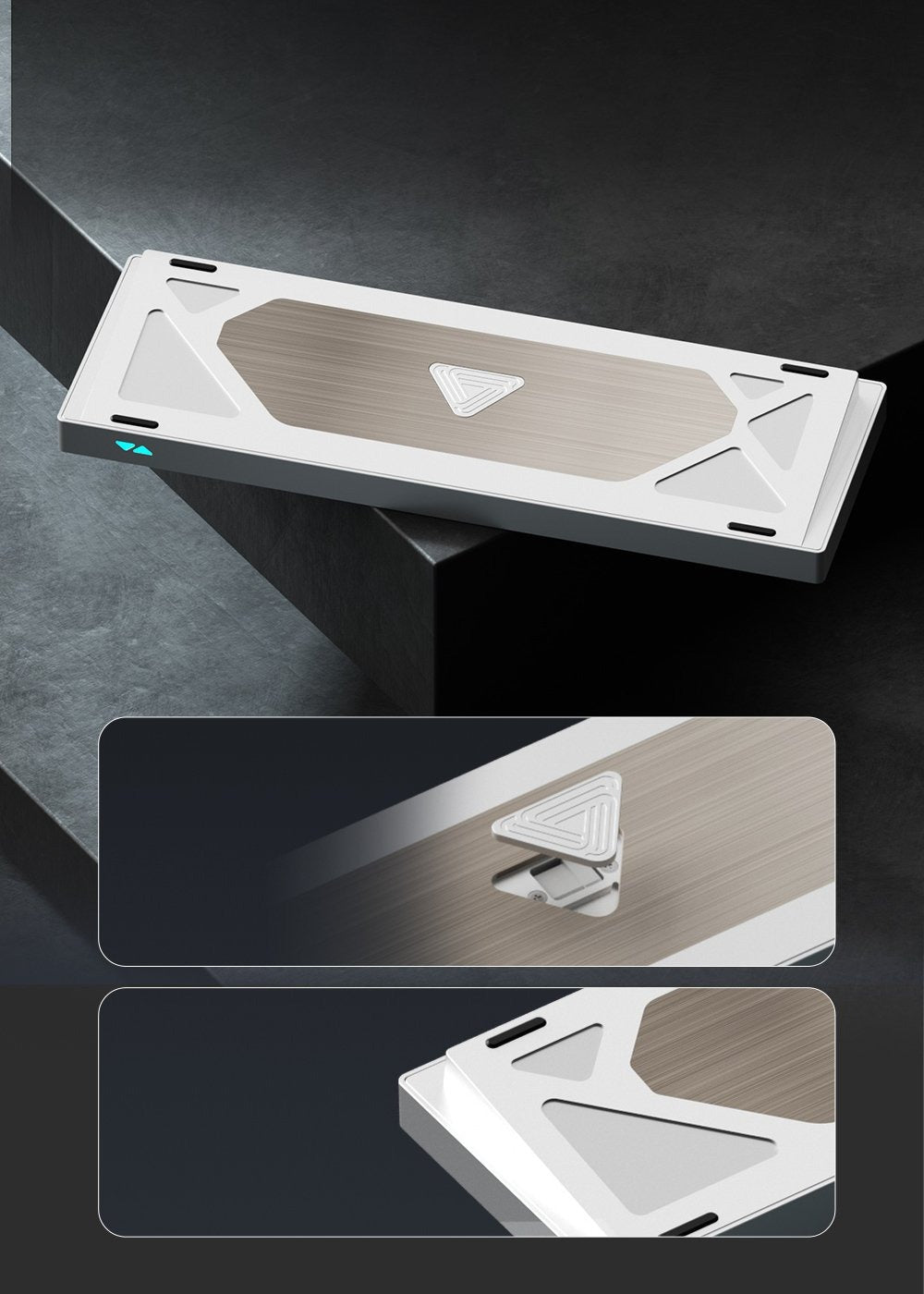When it comes to mechanical keyboards, enthusiasts often talk about the importance of "actuation force," "travel distance," and "pre-travel distance." But what do these terms actually mean? And how do they affect your typing experience? If you’ve ever wondered about these key characteristics of mechanical keyboard switches, you’re in the right place!
In this blog post, we’ll break down these technical aspects and explain how they impact everything from typing comfort to performance. Understanding these elements will help you make an informed choice when selecting your ideal mechanical keyboard.
What Is Actuation Force?
Actuation force refers to the amount of pressure needed to press a key and activate the switch. It’s measured in grams (g) and represents the force required for the switch to register a key press.
- Light switches have a lower actuation force (usually between 35g and 50g), which makes them easier to press.
- Heavy switches require more force (typically 60g and above), which can offer more tactile feedback and reduce accidental key presses.
The actuation force is an important factor because it directly affects how comfortable the keyboard feels to type on. If you prefer a light, effortless keystroke, you’ll likely enjoy switches with a lower actuation force. On the other hand, if you like a bit more resistance and precision, you may prefer a heavier switch.
How Does Actuation Force Affect Typing?
Your typing speed and accuracy can be influenced by actuation force. For example:
- Lower actuation force switches are typically favored by gamers and typists who want a fast, light feel. The light key presses allow for quick, repeated inputs, which is ideal in gaming or for long typing sessions.
- Heavier actuation force switches are often preferred by those who want more control over each keystroke. The added resistance can reduce "fat-finger" mistakes and provide more tactile feedback, making them great for people who want a more deliberate typing experience.
What Is Pre-Travel Distance?
Pre-travel distance is the distance the key moves before the switch registers an actuation (i.e., the key press is registered). This distance is usually measured in millimeters (mm). Pre-travel distance impacts the overall feel of the keyboard and can make typing or gaming more or less responsive.
- Shorter pre-travel distance (under 2mm) means that the switch activates very quickly with minimal key movement. This is often the preference for gamers who want quick responses in high-speed, competitive situations.
- Longer pre-travel distance (over 2mm) means you’ll have to push the key further before it registers. Some people enjoy this because it gives them more control and reduces accidental key presses.
The pre-travel distance is also influenced by the type of switch. Linear switches, for example, provide smooth, uninterrupted pre-travel, while tactile switches offer a small bump in the middle of the travel, signaling that the key is about to actuate.
What Is Total Travel Distance?
Total travel distance refers to how far the key moves before it bottoms out (reaches the end of the key press). Total travel is typically around 4mm for most mechanical switches, but it can vary depending on the switch type.
The total travel distance plays a role in the feel of typing, particularly for those who prefer the “clicky” or tactile feedback that comes with longer key presses. If you prefer quick, shallow presses, you may prefer switches with a shorter total travel distance.
How Does Pre-Travel and Total Travel Distance Affect Typing?
Both pre-travel and total travel distance can significantly impact how the keyboard feels during use:
- Shorter pre-travel and total travel distances typically result in a faster, more responsive typing or gaming experience. You don’t have to press the keys as deeply, which can make typing feel snappy and quick.
- Longer pre-travel and travel distances can make for a more deliberate, slower, and controlled typing experience. This is often preferred by typists who want to ensure each key press is intentional.
For gamers, a shorter pre-travel distance and low actuation force are often preferred because they allow for faster key presses during gameplay. On the other hand, typists may opt for a longer pre-travel distance to avoid accidental keystrokes and provide a more deliberate typing experience.
Conclusion: Finding the Right Switch for You
The actuation force, pre-travel distance, and total travel distance all play a vital role in determining how your mechanical keyboard feels. Whether you’re a gamer, writer, or casual typist, understanding these characteristics will help you choose the right switch for your needs.
- Light actuation force switches are great for fast typists or gamers who want minimal resistance.
- Heavier actuation force switches give more tactile feedback and are ideal for those who want more control.
- Shorter pre-travel distance makes for quicker, more responsive key presses, while longer pre-travel distances allow for more deliberate typing.
- Total travel distance impacts the depth of your keystrokes, with shorter distances preferred for speed and longer distances for control.
When shopping for a mechanical keyboard, keep these factors in mind to tailor your keyboard to your unique typing style and preferences. Whether you want to race through FPS games or enjoy long writing sessions with minimal strain, understanding the technical aspects of switches will help you choose the perfect one.






